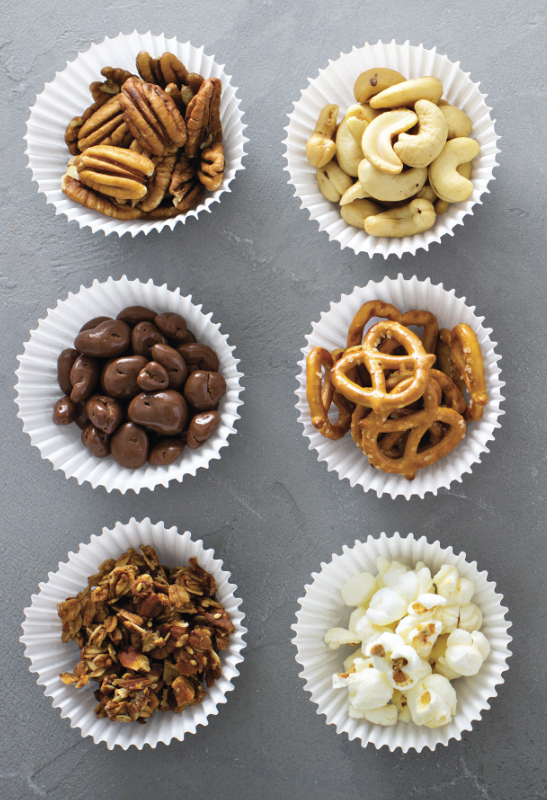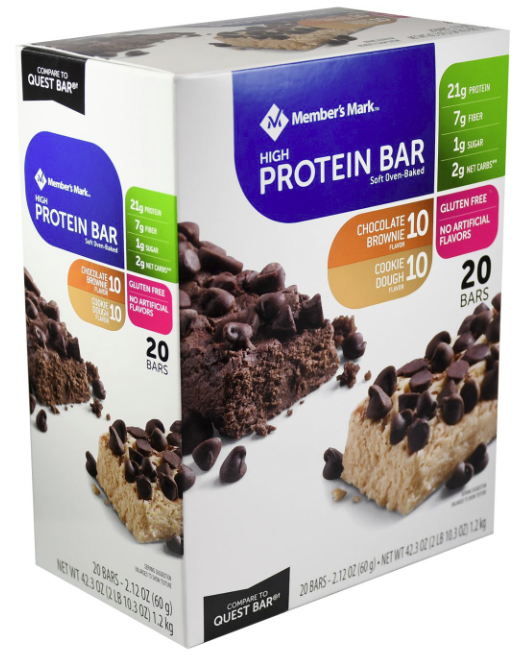KANSAS CITY — Indulgence is a key focus of many products in the snacking space. But as more consumers embrace snacking throughout the day rather than eating meals, consumers are expressing an interest in products that deliver attributes they perceive as healthy. Product developers are working to deliver such products in formats consumers are familiar with.
“We are being asked to make all types of snacks healthier, whether with a protein, a grain, a seed, a bioactive or a premix,” said Max Maxwell, insights manager for Glanbia Nutritionals, Chicago. “For instance, it’s a fun challenge to think how do we put protein in potato chips, cookies, crackers, even water and make those products nutritious and enjoyable for consumers? Consumers want healthier snacks that taste great. It’s as simple as that.”
Kim Holman, marketing director for TH Foods, Loves Park, Ill., said freshness also is becoming an important component of healthy snacking.
“The consumer has evolved in the past couple of years,” she said. “They are now looking for fresh snacking; they are looking at the freshness of the product. How this is translated to the consumer is you are seeing snacks for on-the-go that feature crackers with cheese, fruits or vegetables, or hummus with crackers, for example.”
At this year’s Sweets & Snacks Expo, which took place in Chicago from May 22-24, retail and food service buyers were introduced to a host of new snack products featuring such ingredients as chickpeas, bananas and other fruits, protein from a variety of sources and vegetables.
 From the Ground Up, a brand owned by Halen Brands, Inc., Fairfield, N.J., exhibited a line of crackers, crisps and pretzels made from cauliflower. Bubba’s Fine Foods L.L.C., Loveland, Colo., exhibited ‘Nana Chips made from Banana in such savory flavors as nacho, Blazing Buffalo and garlic Parmesan.
From the Ground Up, a brand owned by Halen Brands, Inc., Fairfield, N.J., exhibited a line of crackers, crisps and pretzels made from cauliflower. Bubba’s Fine Foods L.L.C., Loveland, Colo., exhibited ‘Nana Chips made from Banana in such savory flavors as nacho, Blazing Buffalo and garlic Parmesan.
Ms. Holman said a challenge for manufacturers and marketers is understanding when consumers snack and why.
“Consumers eat snacks for different reasons,” she said. “Some will eat a snack for energy. They may choose a high protein snack around 3 p.m. Others may eat snacks because they want to indulge. They may want a sweet snack in the evening.
“Then the snack has to fit into their lifestyle. Some consumers may be following a specific diet, whether it is gluten-free, vegan or paleo.”
TH Foods is a manufacturer of specialty crackers and snack mix components. It manufactures and markets products under the Crunchmaster brand, but also is a contract manufacturer of snacks and snack mixes. At Sweets & Snacks the company exhibited a variety of snack options, including Power Grain Quinoa Corn Sticks, Vegetable Red Beet Sticks made with beets, corn, quinoa, salt and soybean oil as well as Cinnamon Bun Snack Sticks that are sesame sticks with the flavor of cinnamon bun.
“Quinoa is a big ingredient for consumers,” Ms. Holman said. “It’s a simple ingredient consumers are familiar with. The Red Beet Sticks feature vegetables and the Cinnamon Bun Stick is indulgent.
“A key insight we learned is millennials are eating their snack mix throughout the day, including the morning. The Cinnamon Bun Stick allows us to focus on the morning occasion.”
Mr. Maxwell said protein has become a popular ingredient in snack product development.
 “A good example is the high protein bars you’ve seen at club stores,” he said. “First there was the Kirkland Signature high protein bar and now Sam’s came out with a Member’s Mark high protein bar. All of those things have come to exist in the past two and a half years. Quest reenergized the high protein bar in mainstream markets, and the growth of bars in this high protein bar space has only grown.”
“A good example is the high protein bars you’ve seen at club stores,” he said. “First there was the Kirkland Signature high protein bar and now Sam’s came out with a Member’s Mark high protein bar. All of those things have come to exist in the past two and a half years. Quest reenergized the high protein bar in mainstream markets, and the growth of bars in this high protein bar space has only grown.”
He added that despite all of the talk about plant proteins, the majority of protein in high protein bars remains dairy.
“Some of the original bars had soy protein, and as I see it the transition is other plant proteins replacing soy protein, rather than plant proteins supplanting dairy proteins,” he said.
Among those plant proteins being used, Mr. Maxwell said pea protein seems to be leading the pack.
For product developers, it is imperative to anticipate what consumers will demand at different life stages. From a demographic perspective, it is breaking down that baby boomers are looking for snacks that fit their health and nutrition needs, whether it is related to cardiovascular heath, cognitive function or joint health.
“Baby boomers are more specific about their health needs,” Ms. Holman said. “Millennials are more on the fresh side. They want fruits and vegetables with crackers in an easy, on-the-go pack.
“They are also more interested in flavor; a lot more than any other generation. I think it has to do with the exposure they had growing up. They may have traveled and had an opportunity to try different foods or they were exposed to new foods through television and cooking shows.”
Among millennials and Gen Z, Ms. Holman added that an insight that keeps coming up is an interest in nostalgia.
“Mac and cheese is a great example,” she said. “They are looking for food products they grew up with.”




